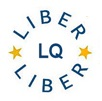Designing Libraries for Research Collaboration in the Network World: An Exploratory Study
DOI:
https://doi.org/10.18352/lq.9525Keywords:
management structures, organization design, research support, university librariesAbstract
Advances in technology and changes in higher education and research are forcing libraries to rethink the services they offer to researchers and how they are presented. Librarians are moving into “higher end support” and adopting new service models based on “deep collaboration” with academic partners. The internal arrangements that form the design of an organization can determine whether it achieves its mission under particular conditions. The present study explores how libraries in 24 leading UK research universities are organizing resources and services to support the research enterprise. Qualitative data were collected from institutional websites and other public domain sources and were analysed using matrix techniques. The results show a trend away from integrated library and computing service organizations; variety in institutional reporting lines, but predominantly in large professional service groups; consistency in internal library groupings, but variation in portfolio and job titles; expansion of specialist positions, with new functional roles complementing traditional subject liaisons; and dedicated spaces, working groups, and integrated websites promoting boundary-spanning activities. The findings confirm and extend prior work and are being used to design a large scale international survey.Downloads
Download data is not yet available.

Downloads
Published
2014-08-04
Issue
Section
Articles
License
Copyright (c) 2014 Sheila Corrall

This work is licensed under a Creative Commons Attribution 4.0 International License.
How to Cite
Corrall, S. (2014). Designing Libraries for Research Collaboration in the Network World: An Exploratory Study. LIBER Quarterly: The Journal of the Association of European Research Libraries, 24(1), 17-48. https://doi.org/10.18352/lq.9525





